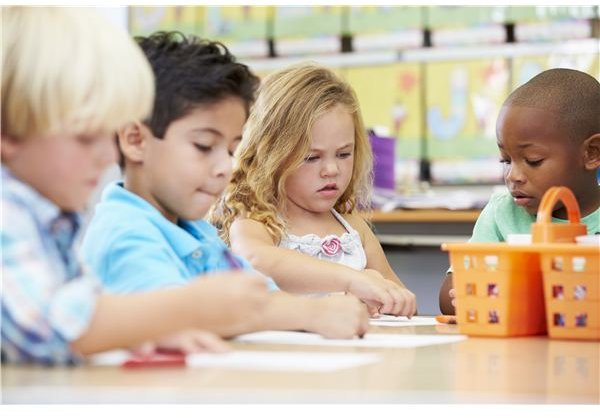Poetry as a Resource to Teach Portuguese to Preschoolers
Poems to Study the Diminutive of Nouns and Adjectives in Portuguese
Teaching a new language to young children can be a challenging task. However, some interesting resources can be used to teach
simple vocabulary to the kids. In this sense, poetry is a very good option, since the variety of themes and the melody of their reading help to keep children’s attention on a specific subject.
The first Portuguese poem for preschoolers we are going to study is “O Elefantinho (The Little Elephant)” from the Brazilian author Vinícius de Moraes. This poem can be used to study the diminutives of nouns and adjectives, especially their pronunciation. The diminutive in Portuguese usually ends in -nho (masculine) and -nha (feminine).
Examples:
- a garota (the girl) – a garotinha (the little girl)
- o carro (the car) – o carrinho (the little car)
- o pássaro (the bird) – o passarinho (the little bird)
O Elefantinho
Autor: Vinícius de Moraes
- Onde vais, elefantinho
- Correndo pelo caminho
- Assim tão desconsolado?
- Andas perdido, bichinho
- Espetaste o pé no espinho
- Que sentes, pobre coitado?
- — Estou com um medo danado
- Encontrei um passarinho!
Pictures of elephants can be shown to help children distinguish between a normal-sized elephant and a little elephant (elefantinho). The same resource can be used for teaching the word “passarinho (little bird)”.
The Little Elephant
- Where are you going, little elephant
- Running along the way
- So disconsolate?
- You look lost, little thing
- A thorn stuck in your foot
- How do you feel, poor thing?
- — I’m terribly scared
- I found a bird!
The second poem to be used is “Sonhos da Menina (Dreams of the Girl)” from the Brazilian author Cecília Meireles. It is a little longer than the first one, but it may be an important tool to teach the students that if a word ends in -nho or -nha it does not mean it is a diminutive. This poem if full of words that look like diminutives but they are not.
Examples:
- o tamanho (the size)
- o sonho (the dream)
Sonhos da Menina
Autora: Cecília Meireles
- A flor com que a menina sonha
- está no sonho?
- ou na fronha?
- Sonho
- risonho
- O vento sozinho
- no seu carrinho.
- De que tamanho
- seria o rebanho?
- A vizinha apanha
- a sombrinha
- de teia de aranha…
- Na lua há um ninho
- de passarinho.
- A lua com que a menina sonha
- é o linho do sonho
- ou a lua da fronha?
In line one, the word sonha is not a diminutive, but the conjugation of the verb sonhar (to dream) for the first person eu (I). Separate the nouns in the diminutive (sozinho, carrinho, passarinho) from the words that are not in the diminutive (sonho, tamanho, rebanho, ninho, aranha…). The translation of the poem is given below.
Dreams of the Girl
- The flower about which the little girl dreams
- is it in the dream?
- or on the pillowcase?
- Dream
- laughing
- the wind alone
- in his little cart.
- What size
- would be the flock?
- The neighbor girl
- catch
- the umbrella out of a spider web…
- on the moon there is a nest
- of a little bird.
- The moon about which the girl dreams
- is it the linen of the dream
- or the moon of the pillowcase?
A Poem to Study the Colors
Teaching the colors to young children is even simpler than teaching the diminutive of nouns, since you can make use of lots of visual resources. The poem below is about the most common colors and use some substantives as examples for each color. Showing pictures of those nouns are very important to help students in the memorization process.
Cores
Autora: Cleonice Rainho
- Branco do leite, da neve
- e dos flocos de algodão.
- Amarelo das laranjas maduras,
- do ouro e dos girassóis.
- Cinzento das nuvens pesadas
- e da cinza dos braseiros.
- Roxo da quaresmeira florida
- e de escondidas violetas.
- Azul do céu de dias claros,
- do anil e do mar profundo.
- Marrom do chocolate gostoso
- e das castanhas de Natal.
- Rosa da corola de muitas flores
- e do rosto de muitos nenéns.
- Preto das noites escuras,
- da fumaça e do carvão.
- Verde das folhas viçosas
- e das pedras de esmeralda.
- E vermelho vivo do sangue
- que colore nossos corações.
Colors
- White from the milk, from the snow
- and from cotton flakes.
- Yellow from ripe oranges,
- from gold and sunflowers.
- Grey from heavy clouds
- and ash of the braziers.
- Purple from the flowering “quaresmeira” (quaresmeira: a type of tree)
- and from hidden violets.
- Blue from clear sky days,
- from the indigo and the deep sea.
- Brown from luscious chocolate
- and nuts for Christmas.
- Pink from the corolla of many flowers
- and from the face of many babies.
- Black from dark nights,
- smoke and coal.
- Green from leaves
- and from emerald stones.
- And red from the blood
- that colors our hearts.
After talking about the poem and showing pictures for the respective color, you can make an activity where the students have to tell the color of some objects you present to them. That will help them to memorize the lesson.
